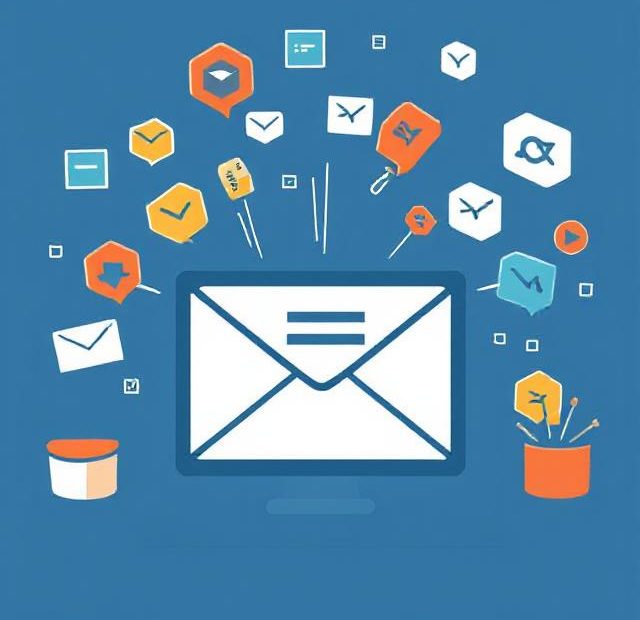Email marketing remains one of the most powerful tools to engage with your audience, but high unsubscribe rates can be discouraging—and costly. Every time someone clicks “unsubscribe,” you lose a potential customer, reader, or loyal follower. Fortunately, there are actionable strategies to reduce unsubscribes with smart emails that strengthen relationships and build trust.
In this article, we’ll explore the main reasons people unsubscribe, and more importantly, how to prevent it through personalization, timing, value-driven content, and smarter email strategies.
Why People Unsubscribe from Emails
Before we dive into solutions, it’s important to understand why people unsubscribe. According to various surveys and data from email service providers (ESPs), the top reasons include:
-
Receiving too many emails
-
Content that’s no longer relevant or interesting
-
Emails that feel too promotional or spammy
-
Lack of personalization
-
Not recognizing the sender or brand
Once you identify the triggers for disengagement, you can address them with smarter email practices.
1. Segment Your Audience
Not every subscriber is the same. Sending a one-size-fits-all email to your entire list is a fast way to lose people.
Segmentation is the practice of dividing your email list based on behaviors, demographics, purchase history, or preferences. For example:
-
New subscribers can receive onboarding emails.
-
Past buyers get exclusive offers or upsell emails.
-
Inactive users can receive re-engagement campaigns.
By tailoring your emails to each segment, you make the content more relevant—reducing the chances of unsubscribes.
2. Personalize Beyond the First Name
While adding a subscriber’s first name to the subject line is a good start, true personalization goes deeper. Use behavioral data to craft messages that speak to your subscriber’s interests.
Examples of deeper personalization:
-
Recommend products based on browsing or purchase history
-
Highlight content categories they’ve engaged with
-
Offer location-specific events or services
The more your emails feel personal, the more likely they’ll be opened, clicked—and not unsubscribed from.
3. Set Clear Expectations from the Start
The welcome email is one of the most important messages you’ll ever send. It’s your chance to:
-
Reinforce what the subscriber signed up for
-
Set the tone for future communication
-
Let them know how often they’ll hear from you
When users know what to expect, they’re less likely to feel overwhelmed or surprised when your emails start showing up in their inbox.
4. Use a Consistent Sending Schedule
Consistency breeds familiarity—and trust. Don’t send sporadically, then suddenly bombard your list with back-to-back promotions.
Tips:
-
Create a content calendar with regular weekly or bi-weekly sends
-
Match your email cadence to your audience’s preferences
-
Allow subscribers to choose email frequency when signing up
Smart email frequency management is one of the easiest ways to reduce unsubscribes with smart emails over time.
5. Provide Value in Every Email
Your subscribers are giving you access to their inbox, so your emails must earn that privilege. Each email should provide real value—whether that’s entertainment, education, or exclusive offers.
Ask yourself:
-
Does this email solve a problem?
-
Does it offer something unique?
-
Would I find this useful or engaging if I received it?
When subscribers see value, they stay.
6. Make It Easy to Manage Preferences
Sometimes a subscriber doesn’t want to completely leave—maybe they just want fewer emails. That’s why it’s smart to include a preference center where they can:
-
Choose email frequency
-
Pick which topics they want to hear about
-
Pause emails temporarily
This empowers users to customize their experience rather than opting out altogether.
7. Monitor and Analyze Your Unsubscribe Triggers
Keep an eye on the unsubscribe rate for every email campaign. If a particular type of email consistently causes spikes in opt-outs, dig deeper.
Look for patterns:
-
Do unsubscribes rise after specific subject lines?
-
Are certain times/days worse for engagement?
-
Are you sending too many sales emails in a row?
Use A/B testing to experiment and improve. The more you analyze, the more you can reduce unsubscribes with smart emails that reflect audience preferences.
8. Re-engage Before You Lose Them
Before subscribers hit the unsubscribe button, they often go quiet first. If someone hasn’t opened your emails in 60–90 days, send a re-engagement email to win them back.
Re-engagement ideas:
-
“We miss you” campaigns
-
Surveys asking how you can improve
-
Special offers or content to re-capture attention
Sometimes all it takes is one well-timed, relevant message to prevent a lost subscriber.
Final Thoughts
Every unsubscribe stings, but it’s also a learning opportunity. Instead of trying to please everyone, focus on building a strong relationship with your ideal subscribers through value, personalization, and relevance.
By using these strategies, you’ll reduce unsubscribes with smart emails that feel human, helpful, and worth reading. Remember: happy subscribers stay longer, engage more, and convert better.
Also, you can learn more about CTR in Email here.
